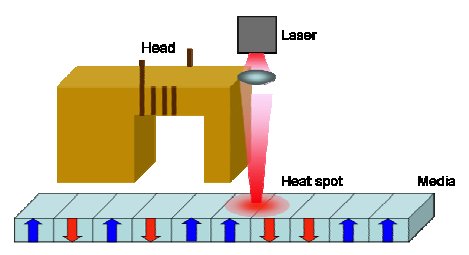How far can the hard disk go?
For some reason, it's difficult to work up any excitement about hard disks. While lots of aspirational drool is lavished on graphics cards and CPUs, the faithful hard disk is often seen as the tedious and functional part of a PC. This is a damn shame, because it’s an ingenious bit of engineering.Of course, it doesn’t help that they’re usually housed in an uninspiring silver brick, but if you’ve clung onto an old hard disks you don’t use, it’s worth installing an OS on it and flipping off the top to see what makes it tick. You soon realise that inside that dreary box is a wonder of the modern world. The head skates over the platter with clinical precision, fishing out tiny sectors in oceans of gigabytes.
It might be mechanical, noisy and clunky, but the hard disk still can’t be rivalled in terms of cost per gigabyte. Let's also not forget that the hard disk has already fought off threats such as the limits of longitudinal recording by moving to perpendicular recording, and plenty of other technologies are planned to keep the future of the hard disk clicking.

The hard disk is a marvel of modern technology. Shame about the noise, though. Image courtesy of Wikimedia Commons
These include heat-assisted mechanical recording (HAMR), where a laser heats the hard drive before it’s written to, enabling more bits to be stored in a smaller space. Likewise, patterned media is also touted as a future technology for hard disks, writing data to an organised array of single-bit cells, which is stamped onto the hard drive using lithography.

Stop! HAMR time...
It may be a relic of the computing world, but the hard disk is surviving the demands of the modern world remarkably well. However, the hard drive’s next obstacle could be the biggest hurdle it's faced yet.
The Problem with 3TB
Earlier this month, Seagate announced that it had its first 3TB enterprise hard disk in development, but the drive brings a fair amount of baggage with it. The problem isn’t the move to patterned media. In fact, Seagate’s product manager Emily Ford specifically pointed out to bit-tech that, ‘We don’t need patterned media, or any of that additional technology to get to a 3TB capacity.’It’s not a move to HAMR either. Seagate’s senior public relations manager David Szabados explained to us that both HAMR and patterned media are still ‘a few years off.’ Szabados adds that ‘there's a certain number of bits per square inch that sees that limitation, but we’re still looking at three to five years.’
In fact, the hard disk’s biggest threat at the moment has nothing to do with the limitations of the technology itself, or even the incoming onslaught of solid state drives. As we’ll explain over the next few pages, the hard drive’s biggest problem is the legacy detritus that’s still festering inside the PC’s architecture, like an old 17th Century bylaw. In short, simply being able to support a hard drive larger than 2TB will require a shake-up of the PC's foundations.

MSI MPG Velox 100R Chassis Review
October 14 2021 | 15:04









Want to comment? Please log in.